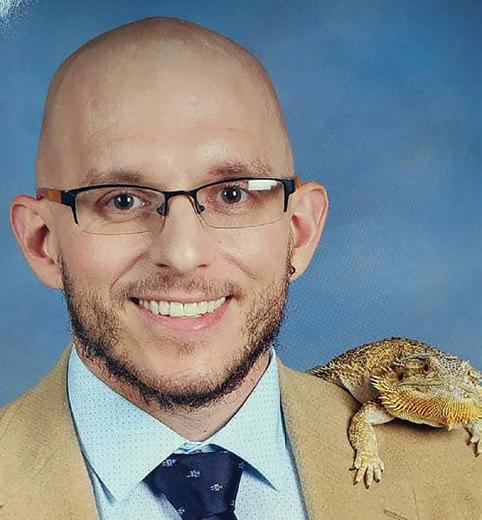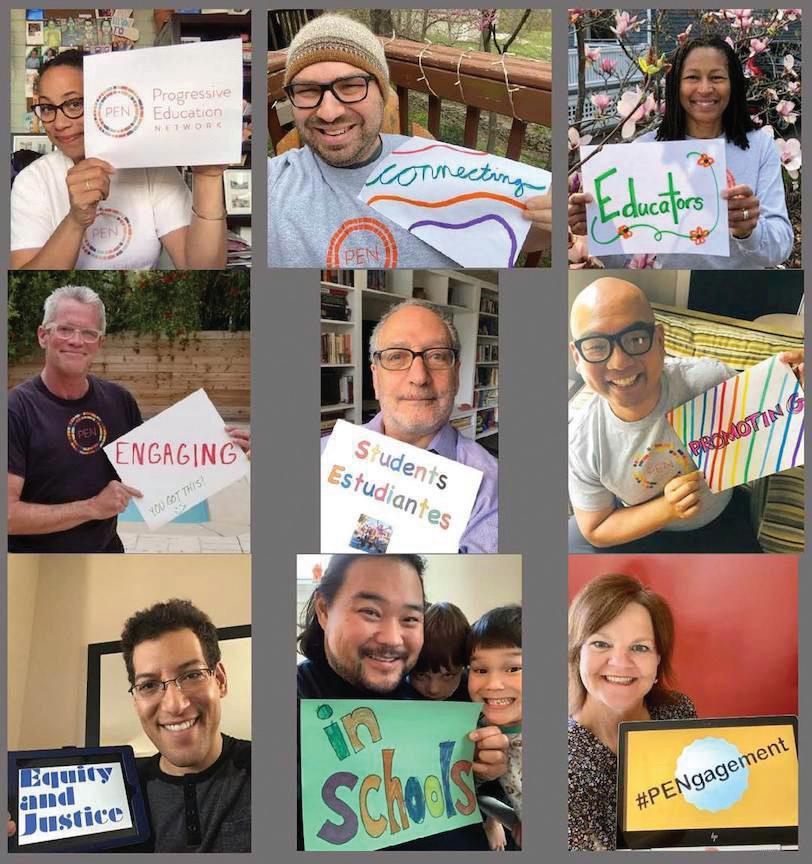
5 minute read
The Speed of a Slug
THE SPEED OF A SLUG: An Illustration of Active Participation
— by Frank J. Mosca, Ph.D.
On a cool, clear November morning, I stepped onto the terrace at The School in Rose Valley to take up my post as morning greeter. There is no better way to start one’s day at school than to welcome children and parents as they arrive each morning. On this morning, several students of mixed ages were already present and I noticed that they were marveling at a slug leaving a trail of slime as it crossed the bricks. One student put his foot in the way and the others watched for several minutes as the slow moving creature took the long way around.
“Does it run out of juice?” asked one student. “It sure is slow,” suggested another. “I hope it gets off the terrace before everyone else gets here,” a third child worried. “Maybe you can figure out just how fast it’s moving,” I ventured.
That is all the prompting it took. Within seconds Kendall had broken a stick and laid it on the ground in front of the slug. He began counting. Then the others chimed in… thirty-seven, thirty-eight…It took the slug one hundred sixteen seconds to cover the length of the stick.
“We’ve got it! One stick in one hundred sixteen seconds!” the students shouted. “That’s interesting, but maybe not a very useful unit of measure.” I stated, “Sticks come in lots of different sizes.”
A frantic search for a ruler ensued.
“Five inches! The stick is 5 inches long.” Kendall confirmed, holding the stick against the recently acquired ruler. “So, 5 inches in 116 seconds.” “116 seconds is almost 2 minutes,” Julie shouted, “can we round up?” “Ok, good…About 5 inches in 2 minutes…how far in one minute?” I asked. “That’s two and a half inches in one minute.” Someone replied.
As another school bus rolled up and, as the children dispersed, I wondered out loud, “How far would that slug go in an hour?”
I found this seemingly simple experience to be magical. Just the fact that we have no problem with kids on their bellies, outside, before school, observing slugs might be impressive, but, as an educator, the way the energy in the multi-aged group grew was thrilling.
As I arrived the next morning, Julie, a third grader, declared that she and her dad figured out that the slug moved twelve and a half feet in an hour. As I passed the kids, on my way to my office, I asked Kendall if he had figured out how many miles per hour the slug was moving.
“No” he replied, but following me into the office asked, “got a pencil?”
This is what progressive education allows! Students of differing ages and grade levels huddled together and focused on something mutually engaging. Adults being OK with students on their bellies, on a November morning, watching a slug traverse a brick terrace, and having the time and space to tap into intrinsic interest, solving real problems. Allowing children to use the tools they see fit, and encouraging the solution of those problems with minimal adult intrusion.
These organic experiences, of course, do not a replace excellent classroom instruction where our students develop an understanding of the specific skills and knowledge they need, but it exemplifies a freedom to have real experiences upon which to build real understanding. The classroom teachers who work with Kendall, Julie, and the other students can use this experience to enhance problem solving and conceptual understanding when the explicit school curriculum is in use.
I was reveling in the fact that I had the opportunity to leave my academic position as a university professor who prepared teachers, to work with the staff, students, and families of The School in Rose Valley for a year. My daughter attended the school. I had spent several years as a Trustee, and even supervised student teachers placed at the school. I had often spoken with my university students about progressive education, explaining the underlying values of community, discovery, experience, creativity, questioning, and collaboration. They listened and agreed that teaching and learning that way sounded very good, but given that most of their pre-service placements were in urban public or parochial schools, they certainly didn’t experience progressive education in practice, and didn’t really see how it could be included.
Thanks to Kendall, we now know that our slug was traveling .002 MPH…interesting, but not a critical, or perhaps even practical, piece of knowledge. We all know slugs are really, really slow, and, for most, that is good enough. More importantly, children had the freedom to be captivated and fascinated by a slug, which provided a launching point for their observations, questions, posed problems, and solutions. As we know, intrinsic interest opens the door to significant learning.
I have since returned to the university classroom. I share these examples and experiences beyond those who already embrace progressive educational practices, and find ways to infuse progressive practices into my university teaching. I also attempt to show my pre-service, and in-service teachers that the lessons of progressive classrooms can be applied to other settings. I would ask you to do the same, where you can. I think you will agree that we still need to demystify what we do as progressive educators. It is important to share our understandings about how to excite and engage learners beyond those who already embrace progressive practices, so that there will be opportunities for more students to experience learning that is driven by intrinsic interest and active engagement.
ABOUT THE AUTHOR Frank J. Mosca, Ph.D. is an associate professor of education at La Salle University in Philadelphia, PA. He has a long-standing relationship with The School in Rose Valley (SRV), including being the parent of an alumna, service on the board of trustees, and interim head of school during the 2014-2015 school year. In addition to the preparation of new teachers, his current interests center on the founding of SRV and the early history of progressive education. He can be contacted at mosca@lasalle.edu. Rod Stanton is the current head of the school. For more information visit: www.theschoolinrosevalley.org










